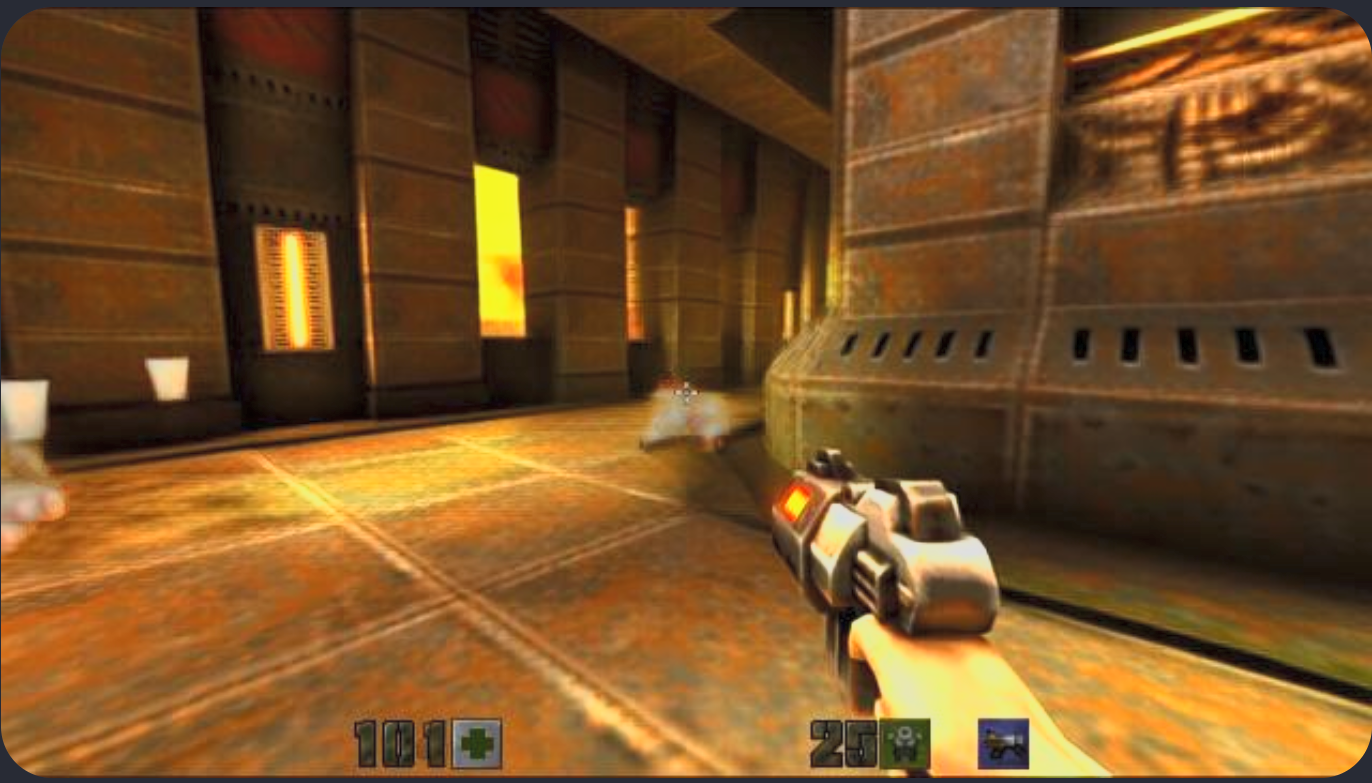You can now play a real-time AI-rendered Quake II in your browser — Microsoft's WHAMM offers generative AI for games

Yesterday, Microsoft unveiled WHAMM, a generative AI model for real-time gaming, as demonstrated in its demo starring the 28-year-old classic Quake II. The interactive demo responds to user inputs via controller or keyboard, though the frame rate barely hangs in the low to mid-teens. Before you grab your pitchforks, Microsoft emphasizes that the focus should be on analyzing the model's quirks and not judging it as a gaming experience.
WHAMM, which stands for World and Human Action MaskGIT Model, is an update to the original WHAM-1.6B model launched in February. It serves as a real-time playable extension with faster visual output. WHAM uses an autoregressive model where each token is predicted sequentially, much like LLMs. To make the experience real-time and seamless, Microsoft transitioned to a MaskGIT-style setup where all tokens for the image can be generated in parallel, decreasing dependency and the number of forward passes required.
WHAMM was trained on Quake II with just over a week of data, a dramatic reduction from the seven years required for WHAM-1.6B. Likewise, the resolution has been bumped up from a pixel-like 300 x 180 to a slightly less pixel-like 640 x 360. You can try out the demo yourself at Copilot Labs.
The model's ability to keep track of the existing environment, apart from the occasional graphical anomaly, while simultaneously adapting to user inputs, is impressive, regardless of the atrociously bad input lag. You can shoot, move, jump, crouch, look around, and even shoot enemies, but ultimately, it's no more than a fancy showcase and can never substitute the original experience.
As expected, the model isn't perfect. Enemy interactions are described as fuzzy, the context length is limited, the game incorrectly stores vital stats like health and damage, and it is confined to a single level.
This announcement follows OpenAI's latest Ghibli trend, which has garnered a lot of negative attention. While I'm no artist, there's a certain human element to every piece of creative work that AI cannot truly recreate. Yet, with AI's current rate of development, we might see that fully AI-generated games and movies could be a reality within the next few years, and that's where things are heading.
The sweet spot lies in AI enhancing, not replacing, creative works, like Nvidia's ACE technology, which can power lifelike NPCs. Parts of this technology are already integrated into the life simulation game inZOI. From a technological point of view, WHAMM still represents a step up from previous attempts, which were often chaotic, incoherent, and teeming with hallucinations.
Get Tom's Hardware's best news and in-depth reviews, straight to your inbox.

Hassam Nasir is a die-hard hardware enthusiast with years of experience as a tech editor and writer, focusing on detailed CPU comparisons and general hardware news. When he’s not working, you’ll find him bending tubes for his ever-evolving custom water-loop gaming rig or benchmarking the latest CPUs and GPUs just for fun.
-
usertests ReplyOpenAI's latest Ghibli trend, which has garnered a lot of negative attention.
I've seen it garner a lot of positive attention. Maybe the whiners are just louder? -
BearRaid This is a concerning step down a really dark road and we should NOT be celebrating it.Reply -
davisch I'm curious how much electricity this takes to run. I have a suspicion that it uses some hefty wattage for just Quake II.Reply -
TerryLaze ReplyAdmin said:Likewise, the resolution has been bumped up from a pixel-like 300 x 180 to a slightly less pixel-like 640 x 360. You can try out the demo yourself at Copilot Labs.
The term is pixelated not "pixel-like" every resolution consists of pixels so pixel-like would only make sense on a display that didn't have pixels but was made to look like it has. -
Alvar "Miles" Udell Another step closer to having truly random dungeons, very detailed and interesting random multiplayer maps, and much improved enemies and single player experiences, something that game studios, especially independent and smaller ones, could never hope to achieve without unsustainable amounts of spending. While some may say doom and gloom, I say this is another step towards a golden age of independent game studios.Reply -
USAFRet Reply
Almost certainly less than a period specific PC, running Q II natively.davisch said:I'm curious how much electricity this takes to run. I have a suspicion that it uses some hefty wattage for just Quake II.
Systems of that era were not known for being power efficient. -
TerryLaze Reply
Yeah, no.Alvar Miles Udell said:Another step closer to having truly random dungeons, very detailed and interesting random multiplayer maps, and much improved enemies and single player experiences, something that game studios, especially independent and smaller ones, could never hope to achieve without unsustainable amounts of spending. While some may say doom and gloom, I say this is another step towards a golden age of independent game studios.
This is going to be way too expensive for indies for many Years.
They were inefficient but they also only had one core instead of 20+ and one tiny GPU compared to today.USAFRet said:Almost certainly less than a period specific PC, running Q II natively.
Systems of that era were not known for being power efficient.
We are talking about 1997 here, a whole gaming system would use less than 150W. -
USAFRet Reply
And this absolutely does not use all those CPU cores.TerryLaze said:Yeah, no.
This is going to be way too expensive for indies for many Years.
They were inefficient but they also only had one core instead of 20+ and one tiny GPU compared to today.
We are talking about 1997 here, a whole gaming system would use less than 150W.
This, playing the first few bits, with a LOT of other things running at the time.
Maybe someone more motivated than I will do a clean slate power consumption investigation.
https://i.imgur.com/qWhGiSm.png
And the GPU:
https://i.imgur.com/jJ2InWh.png -
JeffreyP55 Reply
My shareware version of Super Blackjack from Crazy Hermit still runs on both my 5950x and 9900x. Using one core of course. Still the best blackjack game the comes with a trainer. Crazy Hermit? Gone... I still have to use my login and password for the full version.USAFRet said:And this absolutely does not use all those CPU cores.
This, playing the first few bits, with a LOT of other things running at the time.
Maybe someone more motivated than I will do a clean slate power consumption investigation.
https://i.imgur.com/qWhGiSm.png
And the GPU:
https://i.imgur.com/jJ2InWh.png -
TerryLaze Reply
Doesn't that just mean that it does the compute on the server side?USAFRet said:And this absolutely does not use all those CPU cores.
This, playing the first few bits, with a LOT of other things running at the time.
Maybe someone more motivated than I will do a clean slate power consumption investigation.
Just because you are not using the power doesn't mean that power isn't being used.